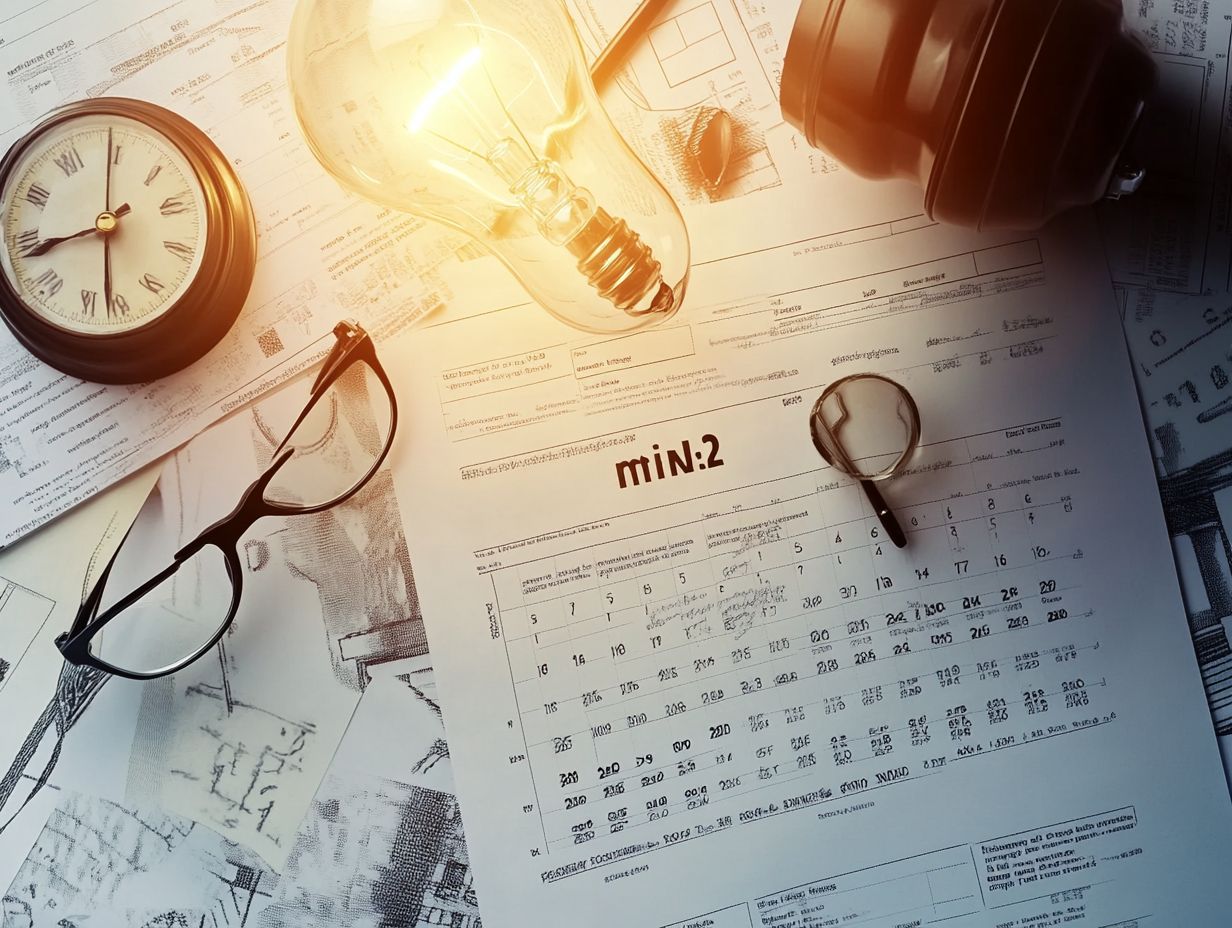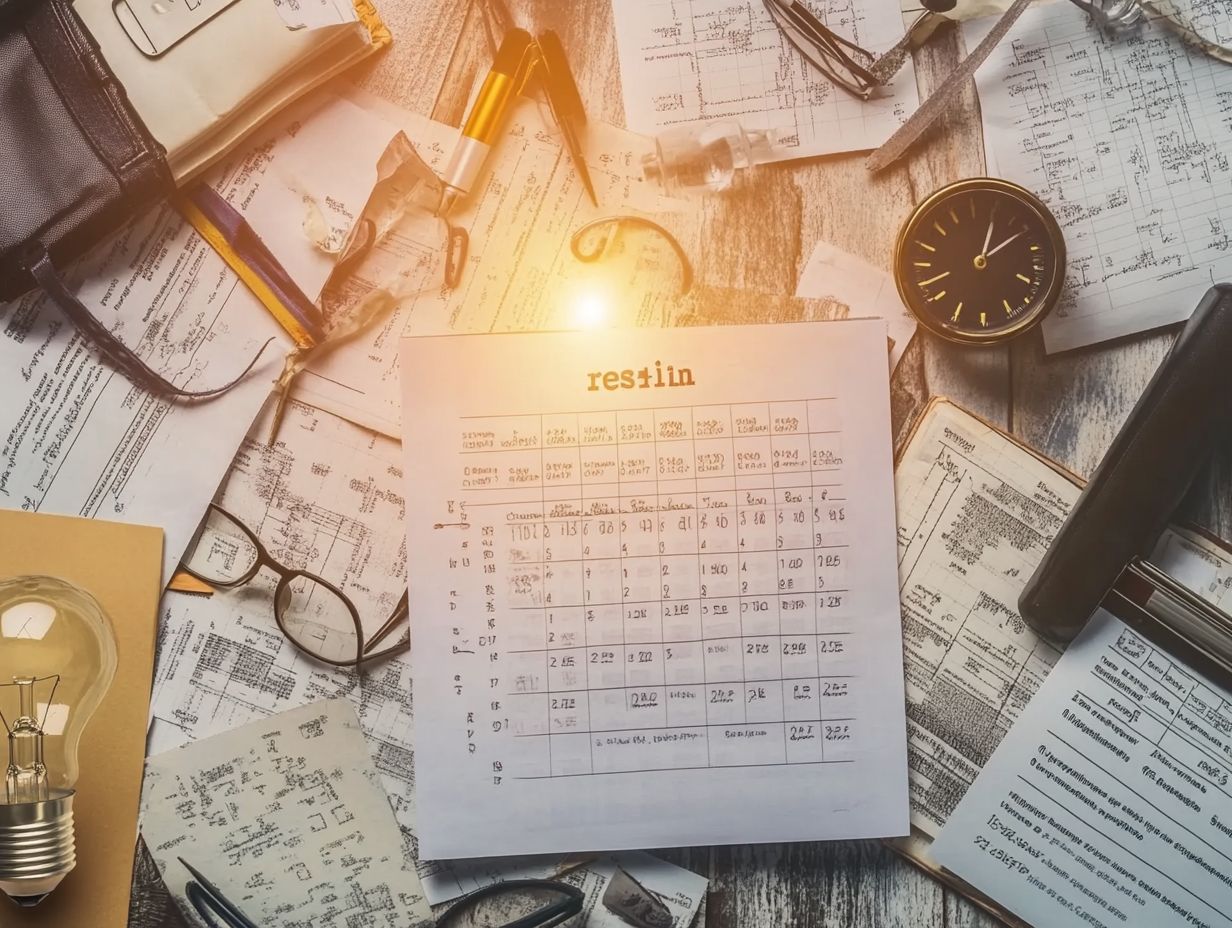Understanding Patent Expiration: What Happens Next?
Patents are instrumental in driving innovation, as they provide exclusive rights to inventors. However, these protections are not eternal; they eventually reach their expiration date.
Understanding patent expiration is vital for businesses, consumers, and anyone keen on grasping market competition dynamics. This article explores the significance of patent expiration, the factors that influence it, and the repercussions for both the market and consumers when patents expire.
You will discover the challenges companies face and explore alternatives to traditional patent protection, offering valuable insights into the evolving landscape of intellectual property.
Contents
Key Takeaways:

When a patent expires, anyone can use the invention without permission. Patents can expire due to a set time period or changes in laws and regulations. After a patent expires, the market may see increased competition and potentially lower prices, while companies may face challenges in adapting to the loss of protection.
What is Patent Expiration?
Patent expiration represents a pivotal moment in the lifecycle of a patent, marking the end of exclusive rights held by the patent holder.
At this point, the patented invention whether a utility patent or a design patent becomes available for public use without the risk of infringing on patent rights. This transition is governed by patent law and has a big impact on intellectual property rights, innovation, and market competition.
As previously protected inventions enter the public domain, a new era of creativity and development unfolds, encouraging a thriving landscape of ideas and advancements.
Definition and Purpose of Patents
Patents are powerful legal tools that grant you exclusive rights to your inventions for a specific duration. This not only protects your intellectual property but also encourages innovation in your field.
These rights are essential for fostering creativity, allowing you to recoup your investments and profit from your groundbreaking ideas. You’ll encounter various types of patents, with utility patents being among the most notable, as they cover new processes, machines, and compositions.
Design patents, on the other hand, focus on the ornamental design of an object. The journey to obtaining a patent can be exciting as you explore the world of patent law, beginning with a thorough patent application that details your invention and its utility or design.
This process involves navigating the intricate landscape of patent law to ensure that your invention is novel and non-obvious. By securing this protection, you not only shield yourself from unauthorized use but also tap into significant economic benefits that can drive growth and advancement in your industry.
Why do Patents Expire?
Patents expire mainly due to the constraints imposed by patent law, which dictates a maximum term during which a patent holder can maintain exclusive rights.
This term typically spans 20 years from the filing date of the patent application, unless maintenance fees go unpaid or adjustments to the patent are made.
Factors that Determine Expiration
Several key factors determine when your patent expires, including the timely payment of maintenance fees, your adherence to the legal standards set forth in patent law, and any adjustments made to your original patent application. These elements are crucial in the overall patent lifecycle, impacting both its longevity and enforceability.
For instance, maintenance fees represent a crucial financial obligation that you must meet to keep your patent active. Neglecting to pay these fees could result in losing your rights, allowing competitors to freely enter the market without any hindrance.
Compliance with patent law is equally important; any deviation from regulatory requirements could jeopardize the validity of your patent. Thus, understanding these responsibilities is essential for you as an inventor or company, enabling you to protect your intellectual property and maintain a competitive edge.
Act now to understand these changes; they can transform your business strategy!
What Happens After a Patent Expires?

Once a patent expires, the patented invention transitions into the public domain. This allows everyone to utilize, produce, or sell the invention without worrying about patent infringement.
This shift democratizes access to the invention and reshapes market dynamics, intensifying competition.
Effects on the Market and Consumers
The expiration of patents opens the door to increased market competition. As inventions enter the public domain, a surge of generic alternatives can significantly reduce prices for consumers.
This transformation makes medications more affordable and fuels innovation within the pharmaceutical industry. Companies are prompted to create new formulations and therapies to maintain their competitive edge.
As generic competition ramps up, manufacturers engage in heated rivalry. This ultimately benefits consumers by expanding choices. With a diverse selection, you can pick products that best suit your needs, contributing to better health outcomes.
Healthcare providers also gain, as they can confidently prescribe cost-effective alternatives without sacrificing quality. This enriches the competitive landscape and ensures that advancements in medicine remain accessible to a wider audience.
Challenges and Opportunities for Companies
The expiration of patents brings a mix of challenges and opportunities.
As you face more competitors, be ready to innovate and adapt! Exploring fresh strategies for innovation and licensing agreements is essential.
These approaches will help you maintain your position and thrive in a dynamic landscape.
Adjusting to the End of Patent Protection
As patent protection wanes, you should recalibrate your strategies to mitigate the loss of exclusive rights. This often means looking for new ways to innovate and exploring licensing agreements to keep your market share.
To navigate this complex landscape successfully, invest in research and development initiatives designed to create next-generation products. Cultivating a culture of innovation revitalizes your product lines and positions you distinctly against competitors wanting to take advantage of expired patents.
Forming licensing agreements can boost your strategy, enabling collaboration with other entities while generating revenue from technologies that were once protected. Patent law plays an essential role in shaping these strategies, providing the framework for your operations and innovations.
Ultimately, your ability to sustain a competitive edge relies on a proactive strategy that blends innovation with collaboration.
Alternatives to Patent Protection
Given the challenges that arise when patents expire, you might want to look into alternatives to traditional patent protection.
Consider leveraging trade secrets and crafting robust licensing agreements. These strategies can help safeguard your intellectual property and maintain that important competitive edge.
Other Forms of Intellectual Property Protection

Beyond patents, you’ll find various intellectual property protections, such as trade secrets, copyrights, and trademarks. Each offers unique advantages for safeguarding your innovations and creative endeavors.
Trade secrets are confidential business information that gives you an advantage over competitors. However, be cautious once a secret is leaked, its protection can vanish.
On the flip side, copyrights automatically shield your original works, including literature and music, but the duration of this protection is limited.
Trademarks protect your brand identity and can last indefinitely if maintained properly. This ensures consumers continue to recognize and trust your brand.
Each form of protection has strengths and weaknesses. It’s crucial to consider how to combine these options with patents to create a robust intellectual property strategy.
The Future of Patent Expiration
Patent expiration will greatly influence innovation and market competition. Pay close attention to changes in patent law and their economic impact on industries like pharmaceuticals.
Trends and Predictions for the Industry
Many pharmaceutical patents are nearing expiration. Expect increased competition from generics and a shift in innovation strategies.
Focus on developing products similar to approved drugs and invest in advanced treatments. This transition will affect your pricing strategies and boost your research efforts.
Established firms must reassess product pipelines. Exploring partnerships or acquisitions is essential to stay competitive.
Regulatory changes may also shape your innovation approach. Embrace these shifts as both challenges and opportunities to sustain profitability.
Frequently Asked Questions
What is patent expiration?
Patent expiration marks the end of exclusive rights for a patent holder. After it expires, anyone can use, make, or sell the patented product without permission.
How long does a patent last?

The length of a patent varies by type and jurisdiction. Typically, utility patents last for 20 years from the filing date, while design patents last 14-15 years.
What happens after a patent expires?
Once a patent expires, the invention enters the public domain. This allows anyone to use, make, or sell the product without royalties.
Can a patent be renewed?
Most patents cannot be renewed after their expiration. However, some design patents may qualify for limited term extensions under specific conditions in certain countries.
What are the implications of patent expiration for consumers?
Patent expiration leads to increased competition and potentially lower prices for consumers. Generic versions may become available, giving you more options!
How does patent expiration affect the original patent holder?
After expiration, the original patent holder loses exclusive rights to the invention. They can still generate revenue by licensing the technology or selling related products.






